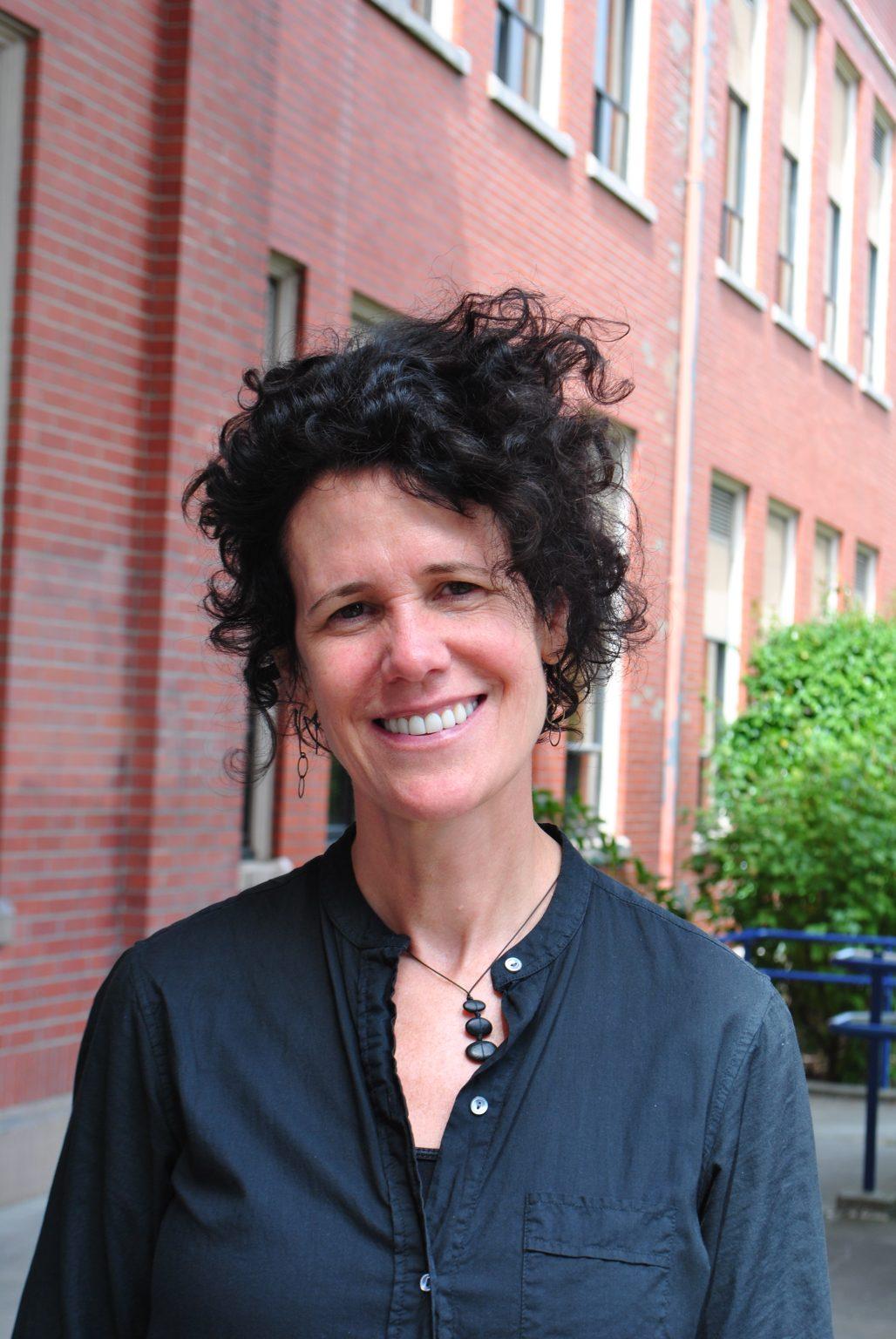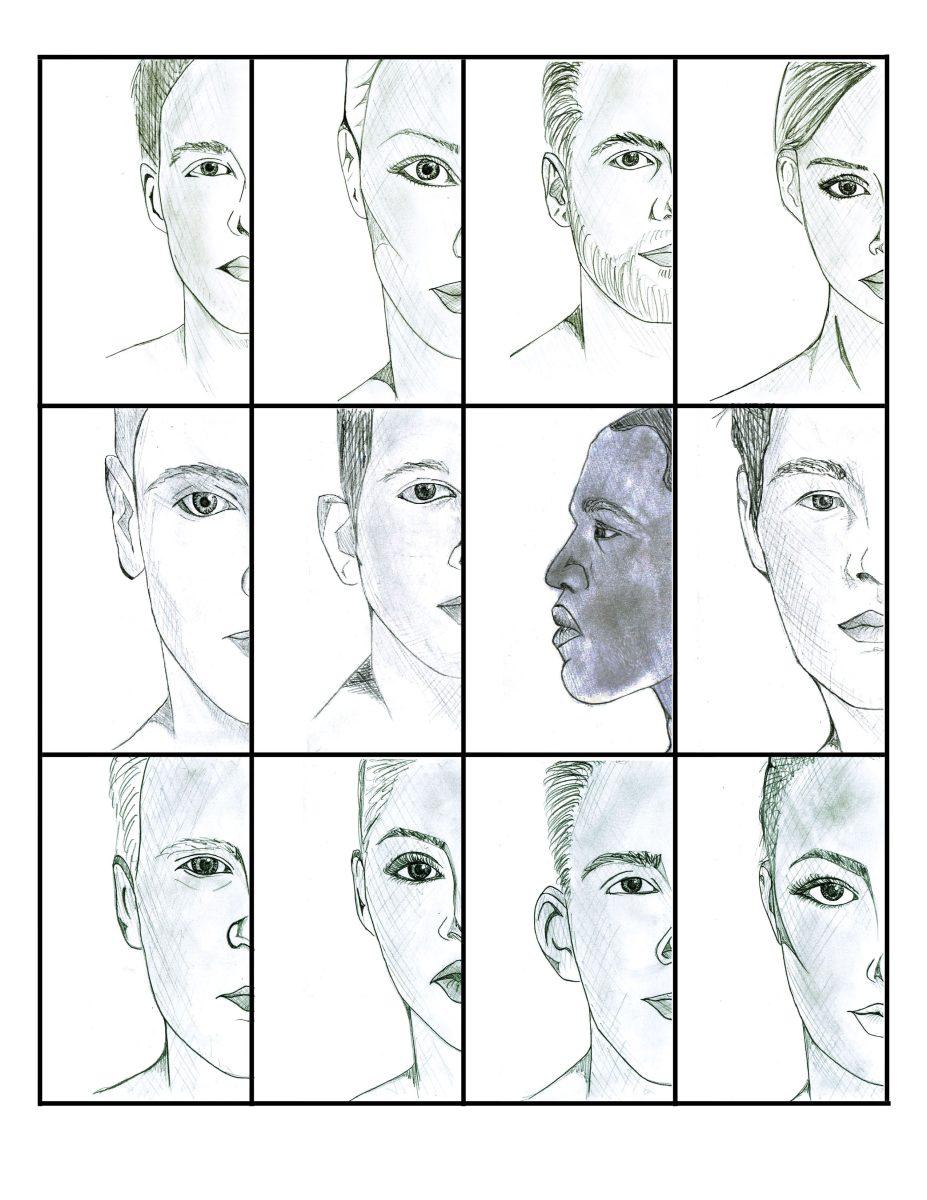By Cade May
Illustration by Salem Carrico-Rogers
Grant High School’s African American teacher population has been in decline for years. But with the recent departure of two black instructors, the school now faces its first year in recent history entirely lacking any black classroom teachers.
With 17 percent of the Grant’s student population being African American, and more than 80 percent of the teaching staff being white, students, community leaders and education experts across the region have expressed concern about the underrepresentation of black faculty members.
Last spring two veteran classroom teachers who are black – Renee Anderson in mathematics and Vernetta Dixon in science – retired. For Grant, starting the year with no full-time black teachers not only points to the larger issue of the disparity in academic success between African Americans and students of other of races, but it also represents a loss for all students, experts say.
“African Americans have different perspectives and experiences,” says Dr. Ethan Johnson, a Black Studies professor at Portland State University. Without African American teachers, Johnson says, “black students won’t get to see people who look like them in positions of authority, and white students won’t get to learn from a different group.”
While there are African American adults filling other positions, including a vice principal, black students coming into Grant this year will find themselves without black role models in the classroom to interact with on a day to day basis.
“This is a serious problem here at Grant,” says Vivian Orlen, the principal of Grant. “The absence of faculty that looks like nearly 25 percent of our student body is a real concern.”

The absence of black teachers represents an even larger step away from the goals of a 1991 act voted on by the Oregon Legislature to close the gap between minority teachers and students.
Underrepresentation of minority teachers in schools presents multiple issues, according to the Center for American Progress. No matter the racial demographics of the students, a lack of diverse faculty members can change the atmosphere of a school. According to many sources, everyone will be missing out.
Grant is by no means the only school dealing with this issue. Nationally, more than 40 percent of public schools are without African-American teachers, according to the Virginia-based United Negro College Fund. Additionally, in 2008, the National Center for Education Statistics said that only about five percent of 4.4 million teachers across the nation are black.
In the classroom, the bond between student and teacher is crucial. If students don’t have someone they can connect to, problems can easily ensue. These include students having difficulty bonding with teachers, a lack of role models, a lack of interest and more.
According to Johnson, many black students often don’t feel like they have much in common with white teachers. Anderson, who left Grant in June, says for African Americans, having a shared cultural background and ancestors who had similar struggles with slavery can facilitate bonding between black students and black teachers.
“Black teachers normally have a better idea of what black students go home to,” says Veda Green, the mother of an African American student at Grant. She feels that that understanding makes for an increased level of sensitivity toward them in class.
Johnson says African-American students can feel like they’re not being represented in a school where the population is predominantly white. While white influences are coming from textbooks inside the classroom and stereotypes portrayed by the media the media outside the classroom, Johnson suggests black students might feel like they don’t belong.

This constant conflict can affect a student’s willingness to learn, as it can be hard for them to invest time in a place that isn’t willing to reach out to them. In fact, according to a report by Center for American Progress, studies have shown that “students of color do better on a variety of academic outcomes if they’re taught by teachers of color.”
For Anderson, leaving Grant was a tough choice. She’d worked at the school for 11 years, helping to organize study programs that benefited all students. She held a particular interest in tutoring black students in math, encouraging them to come by her room for extra help and calling their parents if the need arose.
She thought about retiring a number of times but pulled back. Finally, she made the decision to leave.
“I have a lot of respect for Vivian. She looks at the big picture,” says Anderson, “I still say we need more teachers of color, but I think the school will go on. We have a principal who cares about all kids, we have teachers who care about all kids, and we have counselors who care about all kids. Grant is going in the right direction.”
The lack of African-American teachers “doesn’t necessarily upset me,” says Charlie Brown, a bi-racial sophomore who has black, white and Mexican roots. “But we won’t see as many successful black role models in school.”
While this disparity doesn’t register on the radar for some students, others are concerned.
“Minority teachers will normally have a different view of what they’re teaching because they’ve had different experiences in their lives,” says Simon Griffin, a white sophomore at Grant, “I think they should definitely try harder to incorporate some sort of diversity.”
There isn’t just one reason that can be identified for the deficit in teachers of color. But Russell Peterson, a Grant representative for the powerful Portland Association of Teachers Union, suggests that perhaps the African Americans who choose to invest time and money in college would rather find a more prestigious career that offers a higher salary.
Peterson’s suggestion may not be so far off, according to Center for American Progress statistics. A survey notes that “only 37 percent of African-American teachers and 46 percent of Hispanic teachers were satisfied with their pay. In contrast, 52 percent of white teachers are satisfied with the amount of money that they earn.”
Orlen points to the teachers union’s system for seniority as the main reason she and other principals struggle to recruit teachers of color.
“Principals’ hands are tied,” says Orlen, “The teacher union contract protects teacher seniority. The contract forces a principal to hire a more senior teacher. So that would not allow a principal to hire a less senior teacher, even if they are a person of color.”
In fact, while trying to hire a Latina Spanish teacher for this school year, Orlen says she was recruited away by another district. “She was the most qualified teacher and Grant High School students lost her,” says Orlen. “And that makes me angry and that makes me sad.”
Many education experts agree that without a real effort to diversify the country’s educators, the cycle of white dominance in the teaching field will continue.
“If African-American students don’t see African-American teachers, they’ll never aspire to be teachers,” says Lolenzo Poe, the chief equity officer with the Portland District.
































